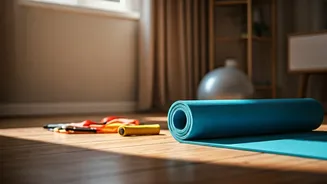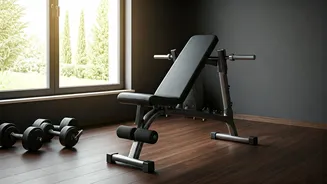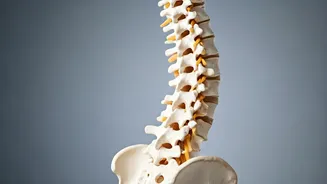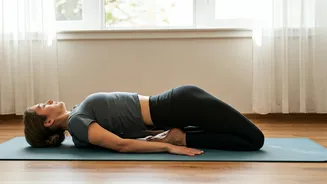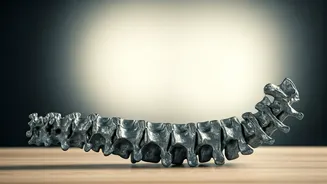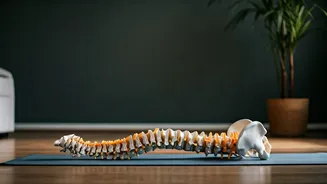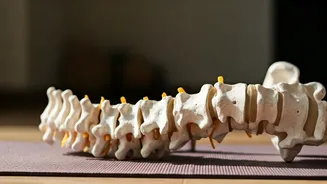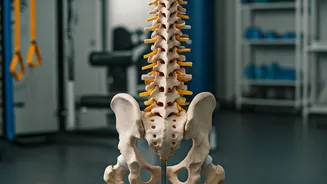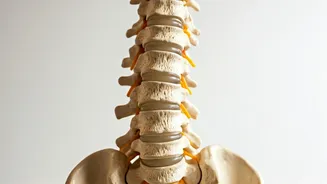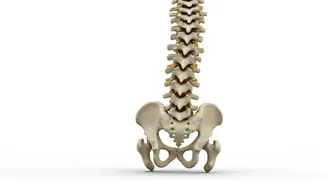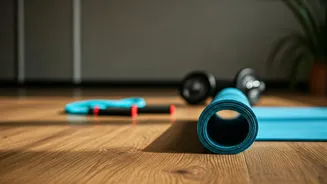Understanding Back Pain
Back pain is a widespread issue with various causes. It can result from poor posture, muscle strain, injuries, or underlying medical conditions. Before
starting any exercise routine, it is important to consult a healthcare professional to determine the cause of the pain and ensure the exercises are appropriate for your condition. This initial assessment helps in tailoring the exercises to the specific needs of an individual, thereby maximizing their effectiveness and minimizing the risk of further injury. Recognizing the source of the back pain is the first step in effective treatment. The exercises detailed below are designed to address common causes, such as muscle weakness and poor posture.
The Cat-Cow Stretch
The Cat-Cow stretch is a foundational exercise for spinal mobility and pain relief. This exercise involves transitioning between two poses: the 'Cat' pose, where the spine curves upwards, and the 'Cow' pose, where the spine arches downwards. To execute the Cat pose, start on your hands and knees, with your hands directly beneath your shoulders and knees under your hips. Round your spine towards the ceiling, tucking your chin to your chest. The Cow pose is performed by dropping your belly towards the floor, lifting your chest, and tilting your head up. Coordinate the movement with your breath, inhaling as you transition to the Cow pose and exhaling as you move into the Cat pose. Repeat this sequence 10-15 times, focusing on smooth, controlled movements. This exercise is good for increasing flexibility.
Pelvic Tilts Explained
Pelvic tilts are excellent for strengthening core muscles and stabilizing the lower back. To do this, lie on your back with your knees bent and feet flat on the floor. Keep your arms relaxed at your sides. Gently tilt your pelvis, pressing your lower back against the floor, engaging your abdominal muscles. Hold this position for a few seconds, then release. Next, arch your lower back slightly, allowing a small space between your back and the floor. Alternate between these two positions, focusing on the movement of your pelvis. Perform 10-15 repetitions, concentrating on the control and engagement of your core. This exercise helps improve posture and can reduce strain on the lower back. Consistency in practicing pelvic tilts can contribute to long-term benefits in spinal health and body mechanics.
Bird Dog Exercise
The Bird Dog exercise is beneficial for improving core stability and balance, thus supporting the spine. Start on your hands and knees, ensuring your hands are aligned under your shoulders and your knees under your hips. Extend one arm forward while simultaneously extending the opposite leg backward. Keep your back straight and avoid arching or rounding it. Hold this position for a few seconds, engaging your core muscles. Slowly return to the starting position and repeat on the other side. Aim for 10-15 repetitions on each side. This exercise enhances coordination and promotes a neutral spine position, which helps to reduce back pain and improves overall body control. It also strengthens the muscles supporting the spine, making it more stable and resilient to injuries.
Knee-to-Chest Stretch
The Knee-to-Chest stretch is a simple yet effective exercise for relieving tension in the lower back. Lie on your back with your knees bent and your feet flat on the floor. Bring one knee towards your chest, gently holding it with your hands. Gently pull the knee closer to your chest while keeping your lower back pressed against the floor. Hold this position for about 20-30 seconds, feeling the stretch in your lower back. Slowly release the knee and repeat on the other side. You can also bring both knees to your chest simultaneously for a deeper stretch. This exercise is good for relieving back pain by reducing the pressure and improving flexibility. Regular performance of the Knee-to-Chest stretch can contribute to improved mobility and pain relief.
Child’s Pose Benefits
The Child’s Pose is a resting pose that helps relax the spine and relieve stress. Start on your hands and knees, then sit back on your heels, bringing your forehead towards the floor. Extend your arms forward and allow your chest to rest on your thighs. You can either keep your arms extended or rest them alongside your body. Take deep breaths, allowing your back to gently stretch. Hold the pose for 30 seconds to a few minutes. The Child’s Pose helps to reduce stress, improve blood circulation, and provide gentle stretching for the back muscles. It's a great option for a quick break. This pose promotes physical and mental relaxation, helping to decrease tension and promote a sense of calmness.
Building a Routine
Creating a consistent exercise routine is essential for managing back pain. It's advised to start with a warm-up, such as gentle spinal rotations or light cardio, before beginning the exercises. Perform these exercises two to three times a week, and gradually increase the frequency or duration as your strength and flexibility improve. Always listen to your body and stop if you feel any sharp pain. It is also useful to incorporate these exercises into your daily routine, to maintain spinal health and reduce the risk of recurrence. Combining these exercises with healthy lifestyle habits, such as maintaining a good posture, and avoiding prolonged sitting, can further improve back health. Over time, consistent practice of these exercises can lead to significant improvements in back strength and flexibility.
Importance of Posture
Good posture plays a vital role in back health. When sitting or standing, maintain a neutral spine position. Ensure your shoulders are relaxed, your head is aligned over your shoulders, and your feet are flat on the ground. If sitting for long periods, use a supportive chair with good lumbar support. Take regular breaks to stand up, move around, and stretch. When lifting heavy objects, bend at your knees and keep your back straight. Using proper posture in daily activities helps to reduce strain on your back and prevent pain. Regularly adjusting your posture can prevent future problems. Conscious effort towards maintaining good posture can significantly lower the chances of back problems.
When to Seek Help
While at-home exercises can be effective, there are instances when you should seek professional medical help. If your back pain is severe or does not improve after a couple of weeks, it is time to consult a doctor. Also, if you experience radiating pain down your legs, numbness, weakness, or loss of bowel or bladder control, seek medical attention immediately. These could be signs of a serious underlying condition. A healthcare professional can provide a diagnosis and recommend appropriate treatment. Remember, regular medical check-ups are crucial for overall health. Early intervention can prevent further complications.
